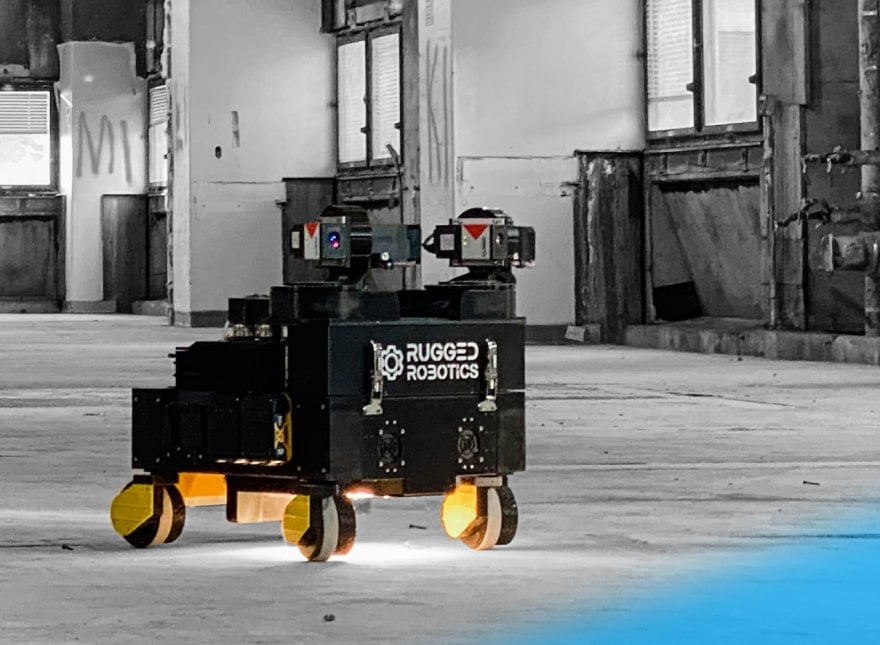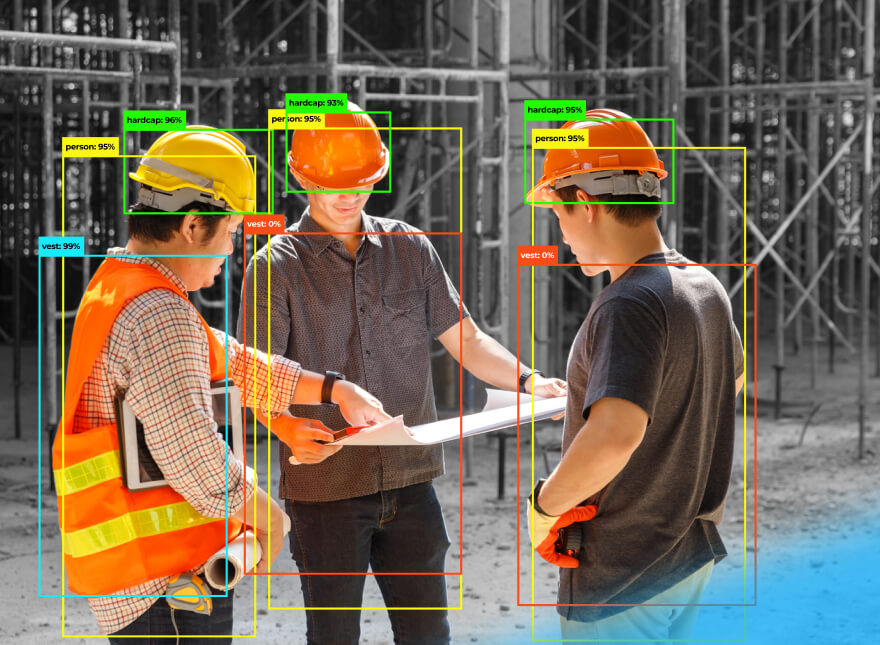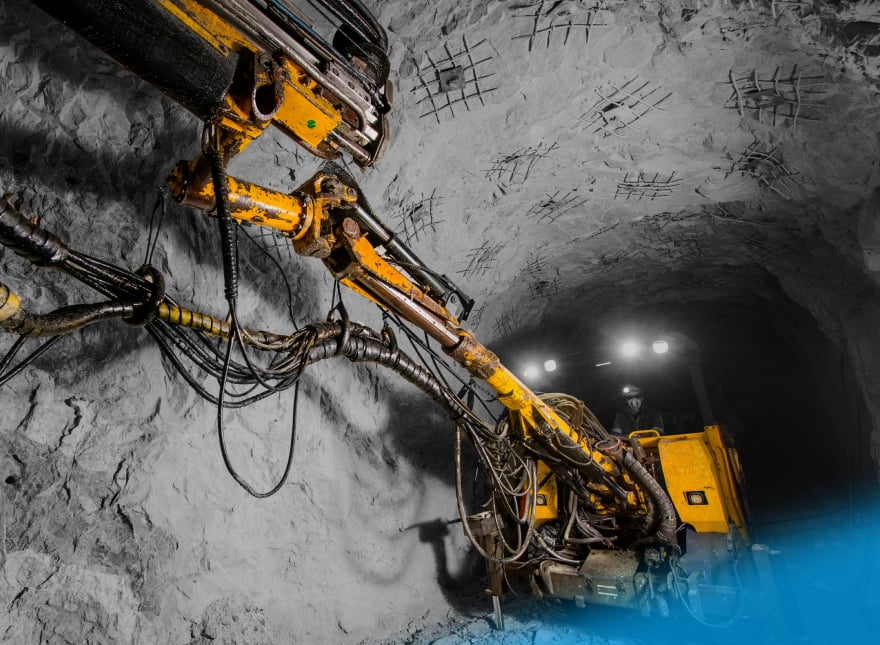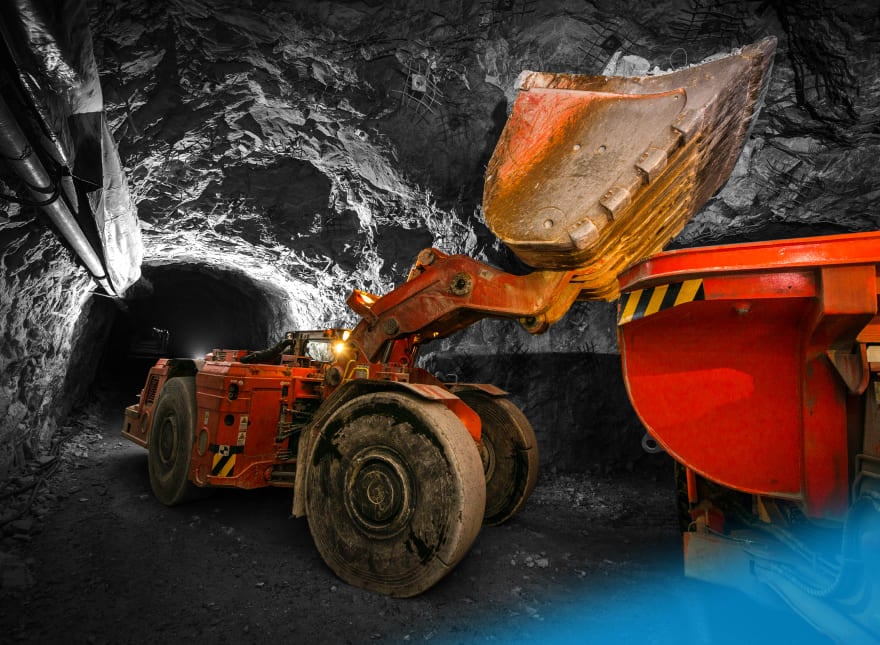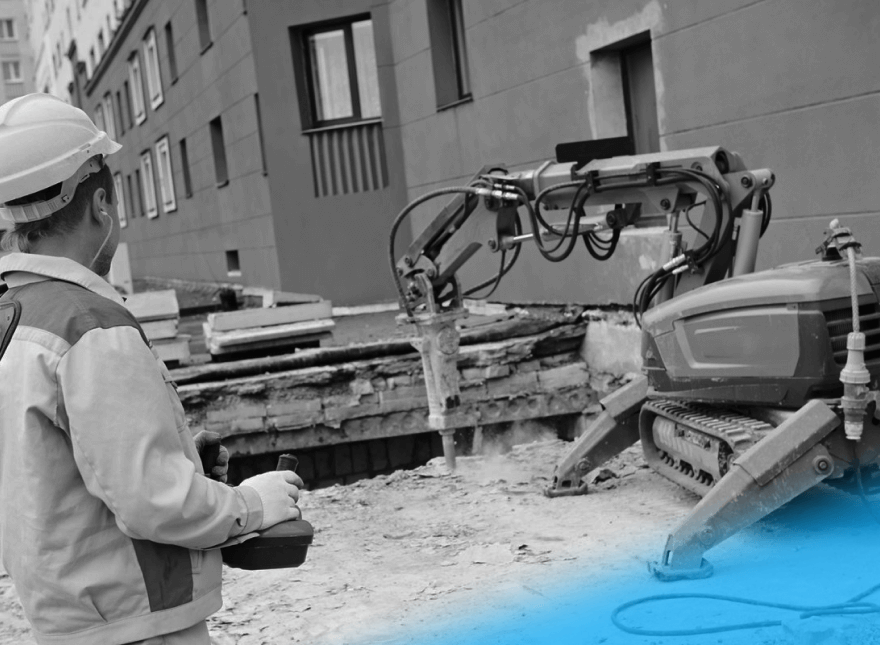Nowadays, the construction industry is struggling with blockers hindering productivity, risks undermining on-site safety, insufficient sustainability efforts, and a genuine lack of interest from younger generations. Technologies like the Internet of Things, Machine Learning, and Artificial Intelligence can be a game-changer for the construction sector, as they cure its most pervasive pain points.
Realizing the potential of technology, many construction companies are seriously considering (and some are already going through) Digital Transformation. As a result, technology utilization is certainly increasing. For example, the global IoT in construction market reached $7.8 billion in 2019 and is expected to jump to $16.8 billion by 2024 growing at a CAGR of 16.5%.
Below are five challenges facing the construction industry that modern technology can help to solve.
Challenge 1. Safety Issues
During 2018, private industry in the US registered around 4780 on-the-job fatalities, with 21.1% coming from the construction industry alone. Falling from heights was the most common cause of fatalities, accounting for 33.5% of all cases. This is not a surprise, given that construction work involves dizzying heights, operating heavy machinery, and walking through chaotic construction sites.
Considering the above, this sector needs to focus on risk mitigation and outline protocols to ensure employees’ safety. Companies that fail to protect their workers can be subject to financial and criminal charges. Proper use of technology in the construction industry can increase safety. This is consistent with the study published by USG corporation, as 60% of the surveyed contractors believe wearable technology will enhance safety. 22% of the respondents think automated equipment or robotics will contribute to safety, while 18% vote for drones.
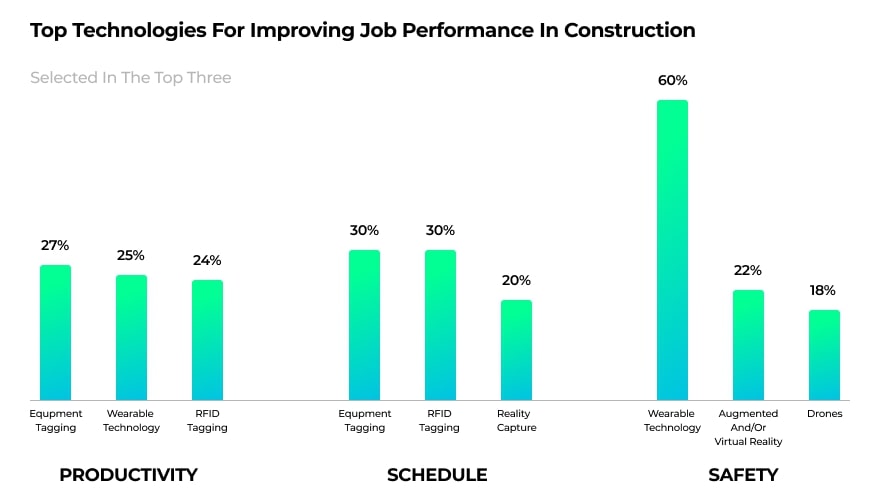
On-Site Imagery
Devices like drones and CCTV cameras can capture millions of images from construction sites. The collected data can be analyzed using AI to identify risks such as collapse events and warn construction workers about the danger. Moreover, images can be used to help spot unsafe worker behavior and identify individuals for specialized training on workplace safety best practices and regulations.
Sensors on Construction Sites
IoT devices enable users to create a real-time construction site map where they can highlight risk zones. This system can be used to alert workers to be cautious when approaching dangerous areas. Additionally, IoT-enabled evacuation alerts are more effective than traditional blow horns, which are easy to miss given the general noisiness of a construction site. As a proof to this claim, Triax Technologies claims that their IoT-based evacuation system helps workers exit emergency sites 70% faster.
Wearables
Accenture’s connected worker concept suggests equipping construction workers with IoT devices that can monitor their condition and the surrounding environment. The IoT market offers many examples of devices that can be useful on a construction site. Zippkool developed a cooling mechanism to sustain body temperature in heat. SolePower manufactured self-charging boots and soles, which can detect and report falls.
Yet another example is wearable sensors monitoring workers who are operating heavy machinery. If the sensors detect a sign of distress or fatigue, they automatically notify a manager who can give the worker in question a break to avoid a fatigue-related accident. A final example is wearable glasses that enable workers to access manuals and instructions in a hands-free mode, allowing them to receive information they need without interrupting their tasks.

Challenge 2. Equipment Control
Monitoring the location and status of equipment is essential in the construction process. Despite its importance, many companies are still relying on spreadsheets or even pen and paper to manually track equipment movements. This process is time-consuming, and considering the complexity of modern construction tools, it inevitably introduces errors in movement logs. It’s all too common for engineers working on a critical project to check an equipment log, and then arrive at a predefined location, only to find the machinery missing. This situation typically results in confusion, finger pointing, and missed deadlines.
Through digitalization, the construction industry can automate equipment control by tagging, data analyses, and Predictive Maintenance.
Predictive Maintenance
Sensors installed in excavators, bulldozers, tower cranes, and other construction machines can track different parameters, such as brake temperature, fuel consumption, humidity, etc. and report any deterioration in vehicles before it escalates. Spotting performance issues before the equipment actually breaks is crucial to productivity, as it allows construction firms to fix the malfunctioning part without putting the project on hold.
Predictive Maintenance reduces repair costs by 5-10% while decreasing maintenance planning efforts by 20-50%.
Improved Machine Utilization
Telematics data gathered from sensors can be analyzed to extract insights on equipment usage, for example, when the machinery needs to cool down. It is especially useful for making business decisions when combined with other business data such as machine depreciation, warranty, and an inventory of spare parts, etc. Aggregating telematics and logistics data also helps spot drivers who are particularly harsh on their machinery.
Keeping Track of Tools with Sensors
Attaching RFID (Radio Frequency Identification) tags to smaller equipment helps locate it easily within a construction site, especially as smaller tools are the ones that usually go missing. Automated asset tracking is no longer a luxury within the construction industry. As reported in the Commercial Construction Index, equipment tagging was one of the most used technologies in construction after drones. And its usage is expected to almost double by 2022.
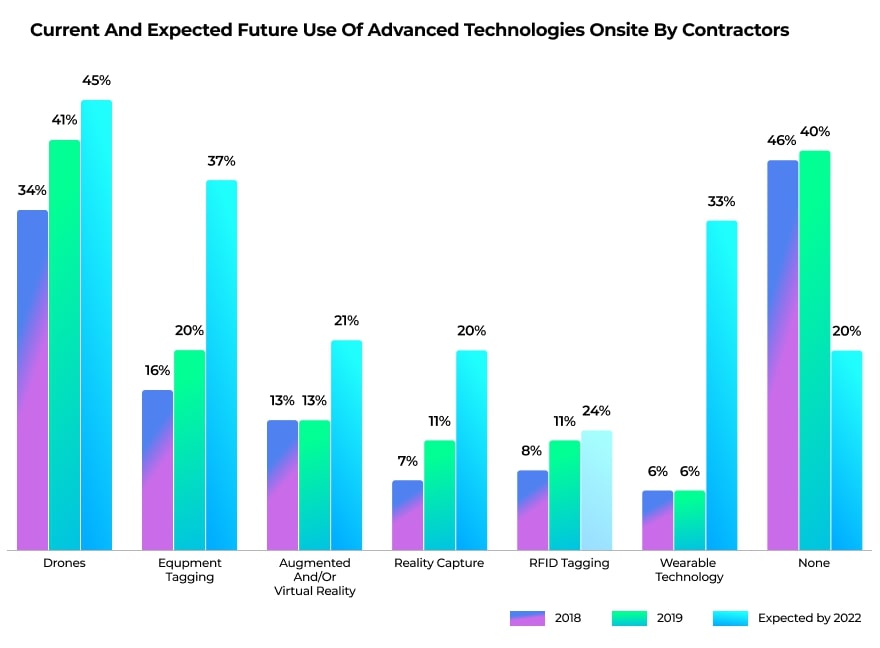
Challenge 3. Productivity
Research conducted by Deloitte shows that productivity across industries has improved by 25% over the past 20 years. The manufacturing industry alone managed to enhance performance by 60%. Surprisingly, productivity within the construction sector has only grown by 5%.
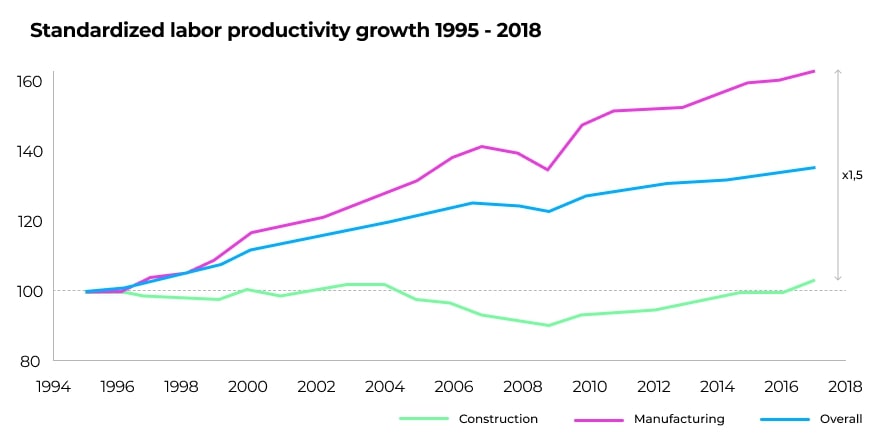
This low productivity growth can be attributed to setbacks construction workers are experiencing in the field. For example, mistakes in building design can significantly delay the construction process. Additionally, it is challenging to estimate the timeframe of some processes such as concrete curing, which can delay the entire project. It is time for the construction industry to consider Digital Transformation to overcome this productivity lag.
Building Information Modeling (BIM)
BIM is a technology-enabled process for generating a 3D model of a building plan, together with its underlying structure and systems. This virtual model is dynamic — when one part is altered, all the others (including electricity, heating, architecture, plumbing, etc.) are automatically adapted to the change. BIM can significantly reduce errors in construction, as any inconsistencies can be spotted before the construction process starts.
Even after the building is inhabited, its owner can use the BIM plan to gain information on facility management and predictive maintenance.
Risk Management Software
This is a specialized program for employing BIM software mentioned above together with Machine Learning and other analytics. It can predict different types of risk surrounding a construction project. Having this knowledge in advance helps managers mitigate risks and increase performance.
One example of such software is BIM 360 Construction IQ. The program performs risk reassessment on a daily basis, going through hundreds of project issues and flagging the ones that involve potential falling, water hazards, and that are pending safety inspection as “high risk”. Autodesk piloted this software in cooperation with Swinerton Builders to monitor subcontractor-related risks and on-site safety. Swinerton was content with the application, citing that it could indeed highlight safety issues and even assign the right subcontractor to fix them.
Concrete Curing Estimation
As mentioned above, it is challenging to estimate how long it will take for concrete to dry and develop the desired properties. Fortunately, technology can help. Temperature sensors can be embedded in concrete during casting that transmit information about curing in real-time. This allows construction managers to schedule their activities with certainty and optimize workforce utilization.
Challenge 4. Sustainability
Nowadays, sustainability is a frequently discussed topic, and customers are aware of their impact on the planet. Consequently, they search for contractors who can prove they are using sustainable materials. This gives companies practicing green construction a competitive advantage. However, consumer’s preferences are not the only reason the industry must seek more environmentally friendly practices. The construction industry accounted for 39% of CO2 emissions in 2018, up 2% from 2017, while the volume of construction waste is expected to reach to 2.2 billion tons by 2025. Incorporating digital initiatives into the industry should help reduce its overall carbon footprint.
Prefabricated Components
Using prefabricated parts is more cost-effective and results in less construction waste. However, this approach might not work for big commercial buildings, as it is not easy to coordinate the delivery of components. IoT technology helps solve this problem by using RFID sensors to track parts within the supply chain. The Leadenhall Building in London was constructed using this technology.
Green Building
Green Building is another endeavor to use technology in order to minimize carbon footprint. It implies not only using sustainable materials for construction, but also minimizing a building’s carbon emission after it is inhabited. An IoT system embedded into the building and its infrastructure helps automatically shut down systems that are not in use, leading the building to function at optimal energy levels.
One famous example of a green building is Edge in Amsterdam. It is packed with 28,000 sensors to capture different parameters, including temperature, light, motion, and humidity. Even the parking spaces contain sensors making the LED lights to brighten when cars arrive and dim when they leave.
Challenge 5. Skill and Labor Shortages
Previously, the construction industry was dominated by the baby boomer generation. As boomers are retiring and millennials and generation X constitute the largest portion of the workforce, the industry is faced with a shortage of labor, as most in the younger generation have little excitement about pursuing a career in construction. The workforce shortages are resulting in longer project timelines and lower customer satisfaction. Additionally, with more experienced workers retiring, companies are forced to take on less qualified people, leading to more accidents and safety issues.
In some cases, technology offers an alternative to the human workforce, while simultaneously making it more appealing to younger generations.
Autonomous Construction Vehicles
Self-driving trucks and excavators can replace humans in some construction duties, especially those that involve a high level of risk. These vehicles use GPS and 3D construction site models to navigate their way and complete tasks. Furthermore, unmanned aerial vehicles (UAVs) such as drones can help survey large construction locations by capturing images and transferring them to construction managers, who will later use them to monitor progress on their sites.
In the 2020 construction outlook survey, AGC found that 32% of surveyed companies are relying on autonomous equipment such as robots and drones to overcome the shortage of human labor.
Increased Attractiveness to Prospective Workers
Construction work is often perceived as dangerous and dull by younger generations. Incorporating digital technology such as AI, VR, and IoT will make the industry more attractive to youth as they are well acquainted with this technology and expect it to be a part of their jobs.
Start Investing in Digitalization
According to McKinsey, construction has been among the least digitalized industries, but now it is awakening and ready to reap the benefits of digital technology. Despite all the merits, incorporating technology can be a challenging and worrisome task.
Here are a few tips to make the process go smoothly:
- Strike a balance between your use cases and financial capabilities: while it is tempting to go for the most cutting-edge technology, you need to analyze your economic situation and prioritize your business cases accordingly — dividing them into long-term strategic initiatives and short-term activities that build momentum.
- Engage with technology startups in the construction ecosystem: there are several options, a construction company can either fund a startup, cooperate with it on co-developing a solution, or partner for a pilot study.
- Invest in skill-building: offer training programs to current employees and support them in reskilling. Simultaneously, tap into a talent pool for candidates with a technical background and do not be afraid to hire people outside the construction sector. Digital Transformation skills are transferable across industries.
Digital Transformation in the construction industry opens many exciting opportunities ranging from gaining a competitive advantage to offering employees better working conditions and minimizing the carbon footprint on our planet. We will reach a point when digitalization will no longer be an option but a must. Companies that failed to digitalize will pay a hefty price.
Section title
More articles on the topic
